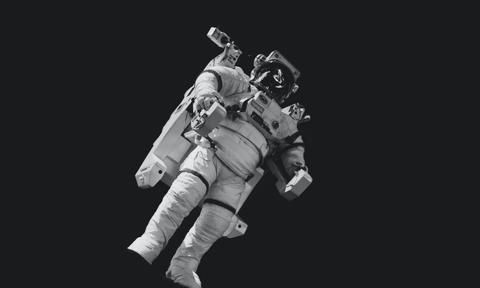
People more intelligent than you and I have been working on getting humans to distant planets like Mars and beyond for ages. While they managed to figure out many logistics theoretically, they were still unable to figure out a way to feed the astronauts on these missions that could last several months, some even years.
Now you don’t have to be an astronomer to know that a spaceship carrying astronauts into deep space wouldn’t practically be able to carry a year’s supply of Pizza Pringles, even if we overlook that it would be inadvisable for anyone to survive on Pizza Pringles for a year despite their superior taste.
So the issue still remained: How can astronauts sustain themselves on long-duration space missions when it comes to food?
Turns out, the answer was within us all along.
The Deep Space Food Challenge by NASA, in collaboration with Canadian Space Agency, invited participants to create novel and game-changing food technologies or systems that require as little inputs as possible and create food solution that is safe, nutritious, and, most importantly, palatable.
The penultimate phase of the competition concluded recently, narrowing down the competition to eight teams. One of the teams, Air Company, has presented a rather interesting, and a little gross (TBH), solution.
According to co-founder Stafford Sheehan, the only things required to produce food that’s perfect for long-duration space missions are water, yeast starter, electricity, and astronauts’ breath.
Yes, you read that right.
The machine created by Air Company uses all the aforementioned ingredients and produces a protein shake-textured yeast that can be dried and rolled into pasta or tortillas. Sheehan described the flavour of this concoction to NPR as “wheat gluten but a little bit sweeter.”
We’re proud to announce that AIR COMPANY is the winner of NASA's Deep Food Space Challenge. It turns out that transforming an abundantly available feedstock such as carbon dioxide into something useful is just as valuable in deep space as it is on Earth. pic.twitter.com/tIQNAWAZGL
— AIR COMPANY (@AirCoNYC) June 12, 2023
The company uses carbon dioxide that’s exhaled out of the human body to produce more yeast, in a way that’s very similar to how plants produce sugar and oxygen using photosynthesis. Back in 2017, Air Company invented a process that could convert carbon dioxide into alcohol, which could be turned into vodka, perfume, and yeast.
We could tell you what AIR Eau de Parfum smells like. Or you could smell it for yourself. Trials now available at https://t.co/vvAcBcnr85pic.twitter.com/HJgdwxvsVv
— AIR COMPANY (@AirCoNYC) May 23, 2023
The Deep Space Food Challenge is not only important to figure out a solution for food consumption on space missions but also to come up with a solution for increasing food security challenges on Earth.
Now we know that it takes about seven months to get to Mars and about the same time to get back to Earth. Adding that to the time it would take for the astronauts to explore Mars and make peace with Martians, it’s safe to say that Mars-bound astronauts will spend more than a year on the mission. Do you think space breath is the solution to the food problem? That’s something for the good people over at NASA to decide when they pick the winner of the third and final phase of the competition and award them with $1.5 million. We’ll just stick to racking our brains for our lunch order for the day.
- Quick links
- NASA
- Mars
- Space
- astronauts






